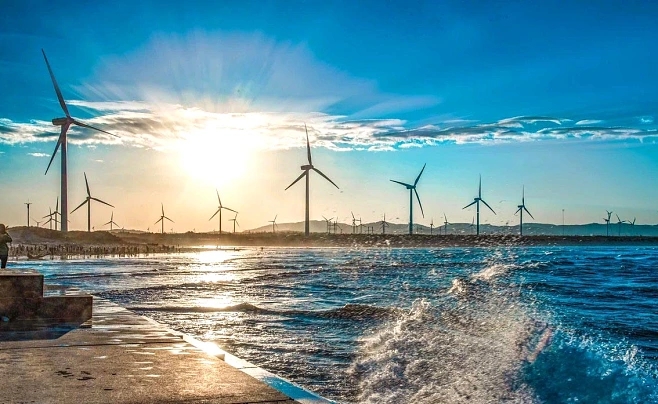Brazil’s Ministry of Mines and Energy and the Energy Research Office (EPE) have released a new version of the country’s offshore wind planning map, following a recent update to the regulatory framework for energy production. The government also plans to have a regulatory framework for offshore wind and green hydrogen in place by the end of this year, according to a recent Reuters report.
The new offshore wind circuit map now includes considerations for allocating federal areas for offshore wind development in accordance with Brazilian laws on area regularization, management, leasing and disposal.
The map, first released in 2020, identifies 700 GW of offshore wind potential in coastal Brazilian states, while World Bank estimates from 2019 put the country’s technical potential at 1,228 GW: 748 GW for floating wind watts, and fixed wind power is 480 GW.
Brazil’s Energy Minister Alexandre Silveira said the government plans to adopt a regulatory framework for offshore wind and green hydrogen by the end of this year, Reuters reported on June 27.
Last year, the Brazilian government issued a decree allowing the identification and allocation of physical space and national resources within the country’s inland waters, territorial sea, maritime exclusive economic zone and continental shelf to develop offshore wind power projects, which is Brazil’s first step towards offshore wind power. An important first step.
Energy companies have also shown great interest in building offshore wind farms in the country’s waters.
So far, 74 applications for environmental investigation permits related to offshore wind projects have been submitted to the Institute for the Environment and Natural Resources (IBAMA), with a combined capacity of all proposed projects approaching 183 GW.
Many of the projects have been proposed by European developers, including oil and gas majors Total Energy, Shell and Equinor, as well as floating wind developers BlueFloat and Qair, with which Petrobras is partnering.
Green hydrogen is also part of proposals, such as that of Iberdrola’s Brazilian subsidiary Neoenergia, which plans to build 3 GW of offshore wind farms in three Brazilian states, including Rio Grande do Sul, where the company earlier A memorandum of understanding was signed with the state government to develop offshore wind power and a project to produce green hydrogen.
One of the offshore wind applications submitted to IBAMA comes from H2 Green Power, a green hydrogen developer that also signed an agreement with the government of Ceará to produce green hydrogen at the Pecém industrial and port complex.
Qair, which also has offshore wind plans in this Brazilian state, has also signed an agreement with the government of Ceará to use offshore wind to power a green hydrogen plant at the Pecém industrial and port complex.
Post time: Jul-07-2023









